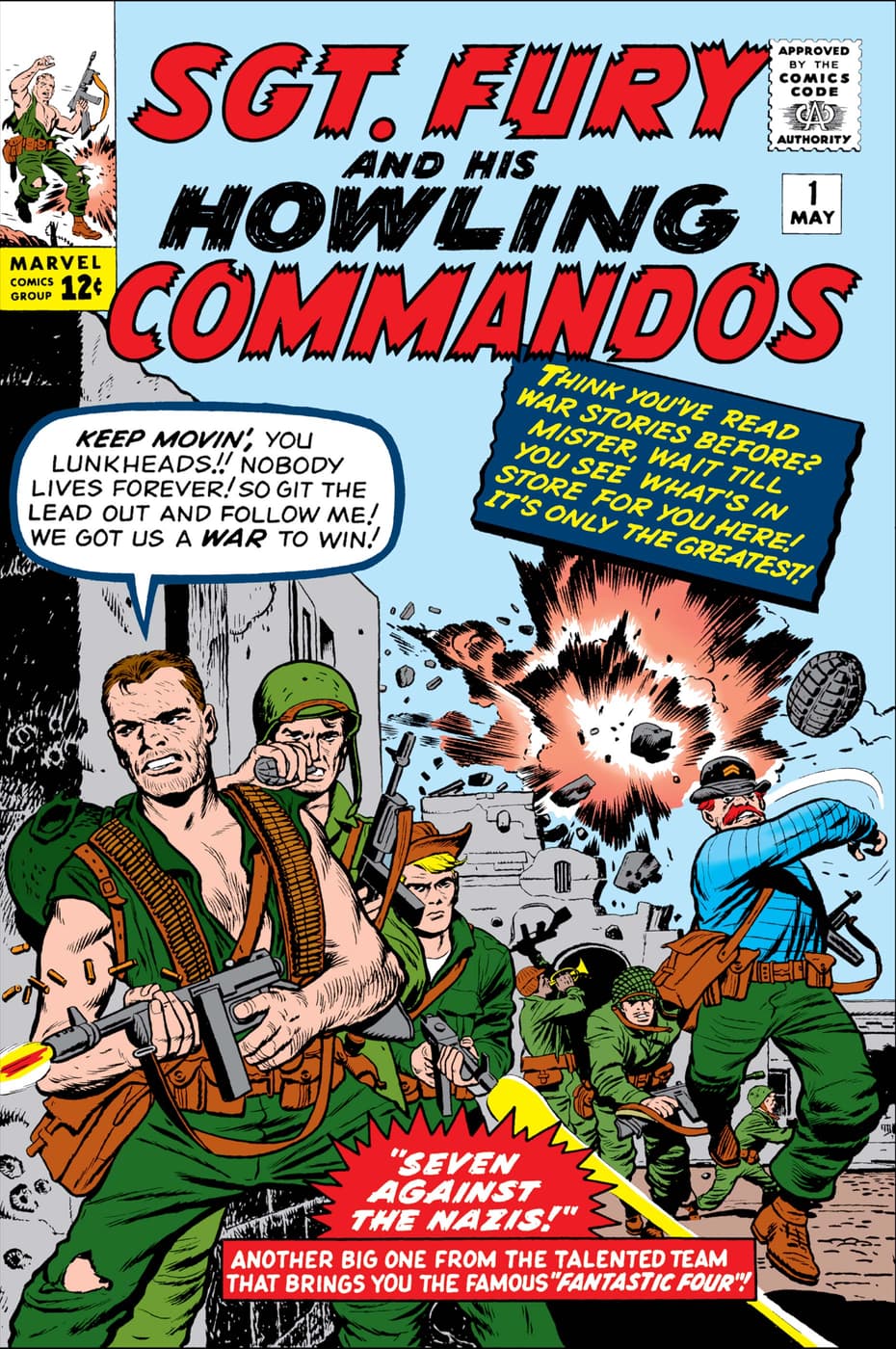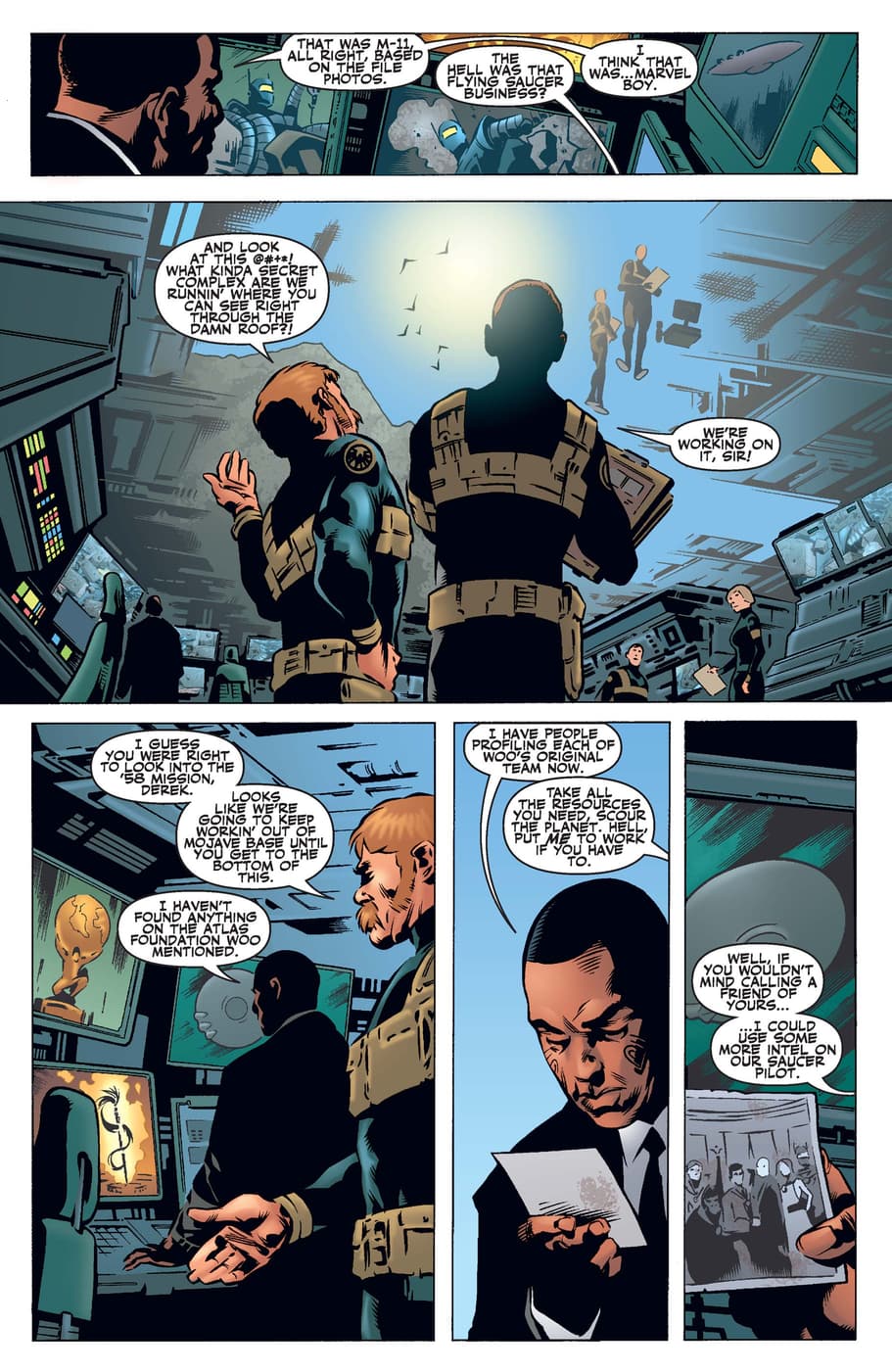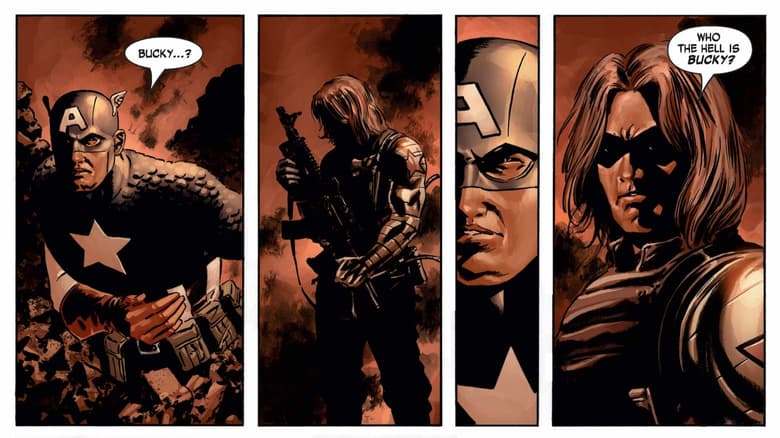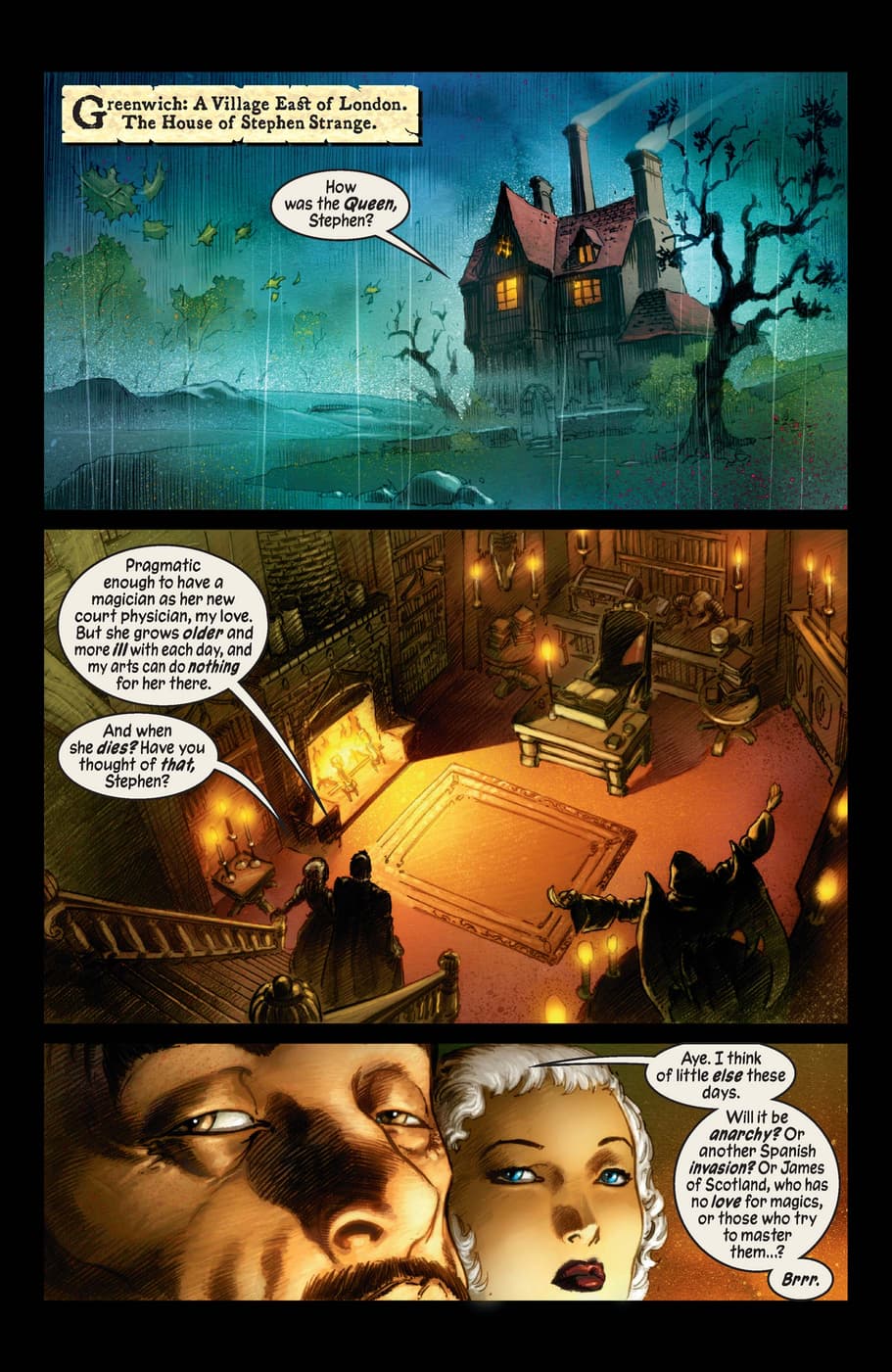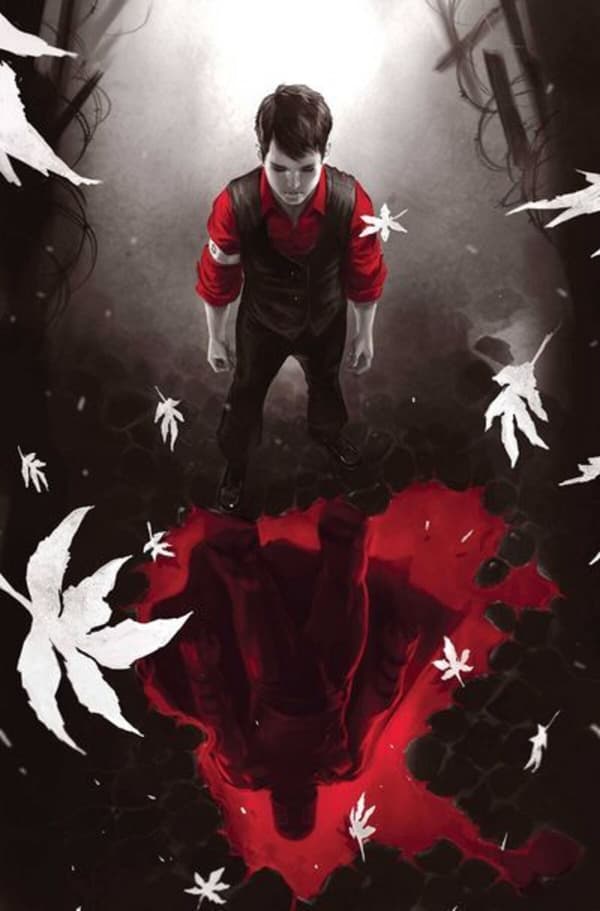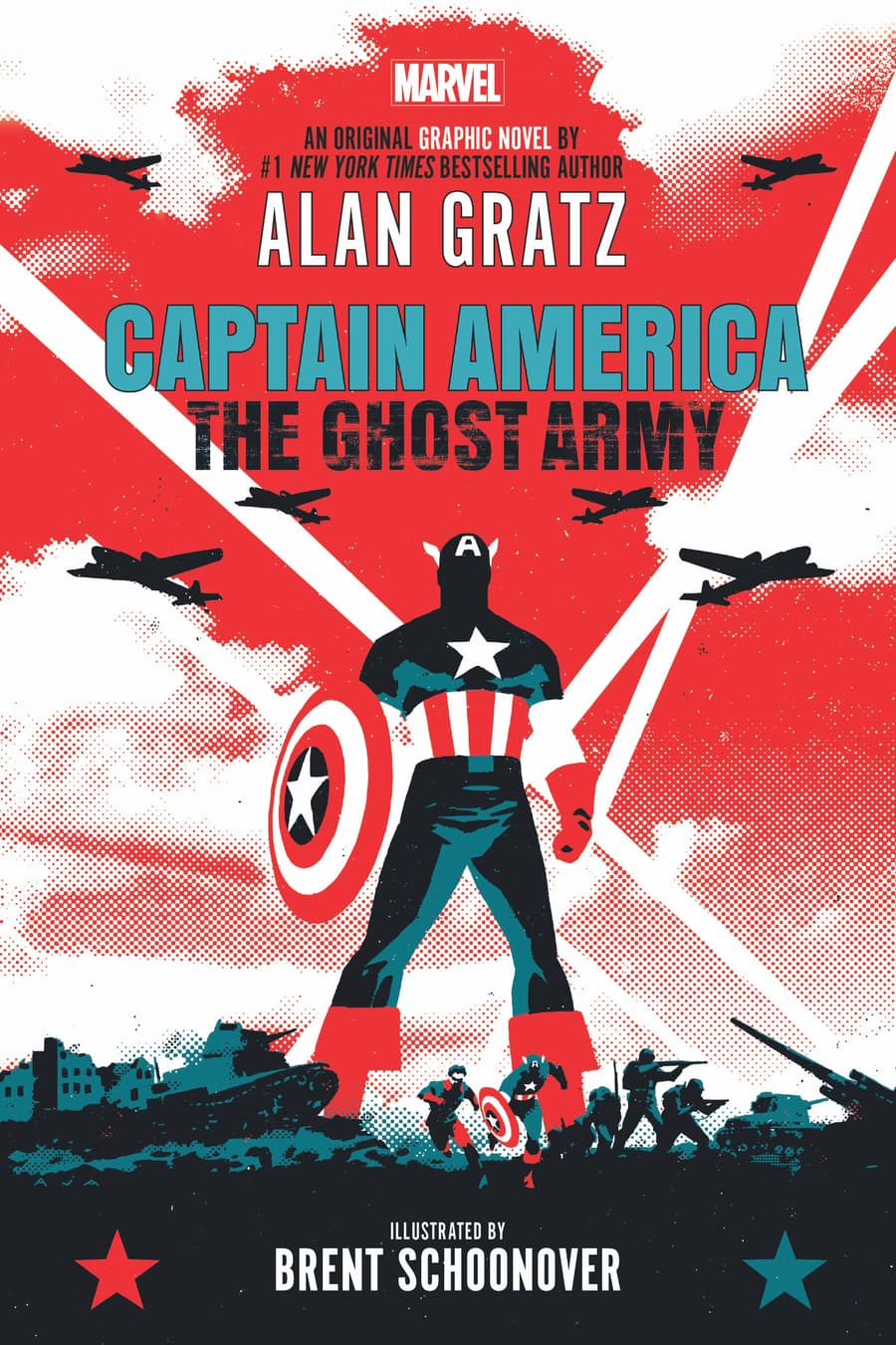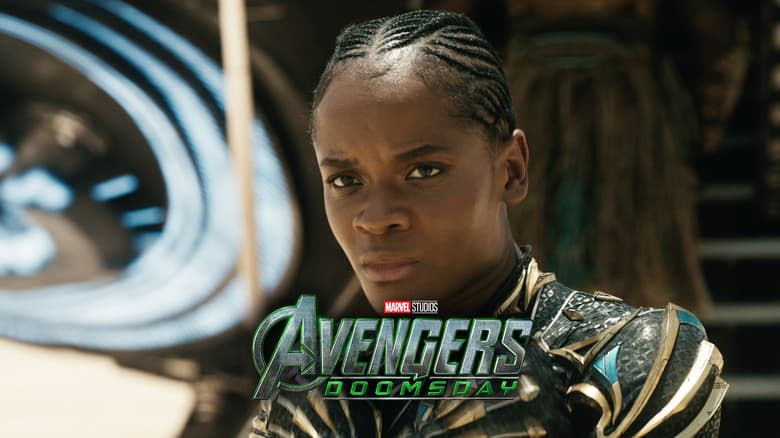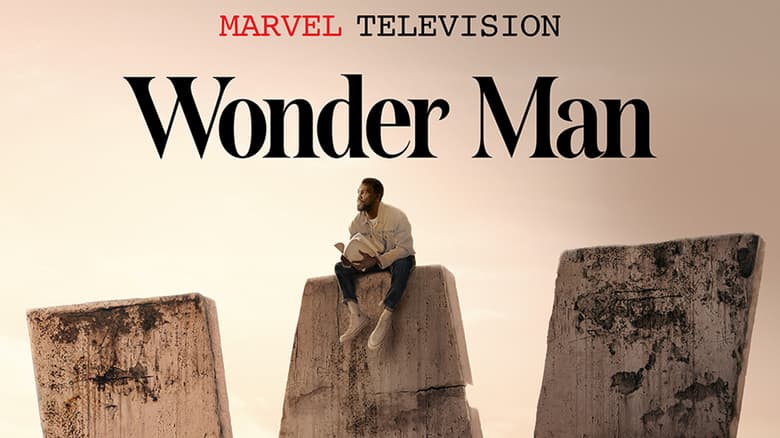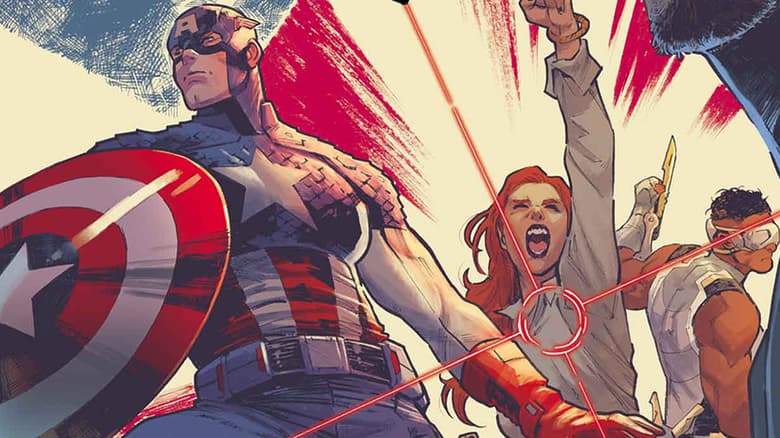A Look Back on Historical Marvel Tales with Alan Gratz
The author of 'Captain America: The Ghost Army' shares his favorite Marvel comics that deal with the complexities of history.
In Captain America: The Ghost Army, I got to write a story of Captain America and Bucky Barnes fighting ghost soldiers—and a familiar Doctor Strange villain—on the Eastern Front during World War II. Captain America: The Ghost Army has some real history in it too, thanks to an appearance by the United States Ghost Army, an actual American unit in World War II that was made up of artists, actors, sound engineers, and writers. Their mission was to use tricks and props like inflatable tanks, giant loudspeakers, dummy paratroopers, and fake radio transmissions to fool the enemy. It’s one of the cooler—and lesser-known—stories of World War II.
Marvel has a long history of comics set in the past, of course. Sometimes writers and artists went back in time to explore the lives of characters who were essentially immortal. Other times, creators revisited the past to enhance, rewrite, or outright retcon a character’s back story. And sometimes, of course, they wrote just to fill in blanks in the already awesome history of the Marvel Universe with more awesome stuff.
To celebrate my own trip into history with Cap and Bucky, here are some of my favorite Marvel comics that tell stories of the past.
Sgt. Fury and His Howling Commandos (1963)
Legend has it that Stan Lee, riding high on hit after hit in the early 60s with co-creator Jack Kirby, bet then-publisher Martin Goodman that he could take the worst title he could think of and turn it into a hit. The result was Sgt. Fury and His Howling Commandos, a book that proved the Kirby-Lee combo was indeed comics gold.
The series, which follows the thrilling adventures of a fictional World War II army unit, counts as historical fiction even though it was introduced just eighteen years after the end of World War II (and a full year before Cap was defrosted in the pages of Avengers). Sgt. Fury and company went on to fight the good fight for another eighteen years in the pages of their comic, finally ending their original run in 1981.
Kirby and Lee stayed on the title for seven issues, until their hit superhero comics made them too valuable elsewhere. Dick Ayers took over for Kirby, eventually penciling almost 100 issues, while Lee was followed first by Roy Thomas, and then by Gary Friedrich, who broke new ground with hard-hitting war stories that examined topics like regret, loyalty, desertion, trust, sacrifice, and conscientious objectors. In addition to introducing now-famous Marvel characters Nick Fury and Dum Dum Dugan, Howling Commandos was also notable for its diverse cast, including Izzy Cohen, the first explicitly Jewish hero in American comics, Jim Morita, a US Army ranger of Japanese ancestry, and African American Gabriel Jones.
Agents of Atlas (2006)
Most of this six issue mini-series is technically set in the present, but I love what writer Jeff Parker and artist Leonard Kirk did in Agents of Atlas to retcon a collection of classic 40s and 50s comic book characters into an early superhero team. Namora, Venus, Marvel Boy, Gorilla-Man, M-11 the Human Robot, and agent Jimmy Woo—yes, the same Jimmy Woo you know and love from the Marvel Cinematic Universe—all first appeared in stories published by Atlas Comics, the 1950s company that evolved into Marvel Comics in the 1960s. (And which itself evolved from the 1940s’ Timely Comics, the first home of Cap, Namor, and the original Human Torch.)
In a winking nod to their Atlas Comics origins, Parker imagines the group of heroes as the “Agents of Atlas,” brought together by the US government in 1958. After rescuing the kidnapped President Eisenhower, the team goes on a few more missions before the whole project is mothballed and buried as classified. (Hence the supposed reason you’ve never heard of them.) Now our retro heroes have to get the band back together to save their old friend Jimmy Woo—and confront an old threat from their past. Along the way, each of the old-school heroes gets the kind of loving attention usually granted only to Marvel’s more famous stars, including in-depth origin stories and well-rounded histories. And honestly, who couldn’t use more Gorilla-Man in their lives?
Captain America: Out of Time (2004) and The Winter Soldier (2005)
Hard to talk about revisionist history without mentioning the retcon to end all retcons. The one that broke the first of two long-standing and legendary unwritten rules at Marvel: “No one stays dead except Bucky and Uncle Ben.” Writer Ed Brubaker and artist Steve Epting did the seemingly impossible right from the start of their landmark run on Captain America, bringing Cap’s old World War II sidekick Bucky Barnes back in a way that delighted fans and critics alike. Bucky Barnes didn’t die at the end of the war, it turned out (which was itself a retcon of Cap’s history in the 1960s!) but instead was captured by the Russians and rebuilt and reprogrammed as a cyborg assassin codenamed the Winter Soldier.
Like Agents of Atlas, Brubaker and Epting’s run was focused on the present, but the comics contain extended sequences with Cap and Bucky in World War II, including cameos from their Invaders teammates Namor, The Human Torch, and Torch’s sidekick Toro. The rest became Marvel comics history, and years of angst and adventure and retribution followed.
Squirrel Girl: Doreen & Nancy’s Excellent Doom-venture! (2015)
In her second issue #2 of the year (if you’re a regular comic book reader, you’ll understand—and commiserate), Doreen Green, aka Squirrel Girl, is hit by a temporal blast that strands her in the year 1962. But Ryan North and Erica Henderson’s Squirrel Girl is unbeatable in battle and in attitude, and a little chronal displacement isn’t going to dampen her perpetually positive vibes.
Doreen immediately—and literally—throws her squirrel companion Tippy’s warning about the Butterfly Effect out the window when she tosses a robber through the plate glass of the Café Papillon, and the timeline goes even further off the rails when Doreen’s roommate Nancy recruits Doctor Doom to take her back to 1962 on a rescue mission. Doom immediately reneges on his deal not to get up to any shenanigans (naturally), and the fight is on to stop a future ruled by Doom.
Along the way, Doom considers inventing Doom Head screws that won’t strip like Phillips Head screws, creates his own programming language that’s just infinite permutations of the word DOOM, and namechecks Maslow’s Hierarchy of Needs. (Listen, he didn’t go through six years of graduate school for you to call him MISTER Doom.) In the end, Doreen beats Doctor Doom the same way she did in their original encounter in the pages of Marvel Super-Heroes from 1991, this time not with a swarm of squirrels, but a swarm of Squirrel GIRLS. You know, just another average adventure in the life of the irrepressible, unbeatable Squirrel Girl.
Marvel 1602 (2003)
I know, I know. It’s alternate history, not real history. But come on! Dr. Stephen Strange, from the English village of Greenwich, who serves as Royal Physician and Magician to Queen Elizabeth. Sir Nicholas Fury, Queen’s Intelligencer, and his Irish operative, the blind minstrel Matthew Murdoch. The Fantastick Four, transformed by a strange phenomenon while on a sea voyage to explore the New World. Peter Parquagh. Count Otto Von Doom. Carlos Javier and his Secret College for the Sons of Gentlefolk. And that’s just the start. Neil Gaiman and Andy Kubert’s 1602 is an absolute delight for long-time Marvel fans, full of in-jokes and Easter eggs. It’s a masterclass in storytelling too, with action and intrigue and surprises at every turn.
X-Men: Magneto Testament (2008)
In development for three years, the five-issue Magneto Testament is writer Greg Pak and artist Carmine di Giandomenico’s final and ultimate word on the origins of Max Eisenhardt, aka Magneto. As Pak says in his author’s note in the first issue, he and editor Warren Simons “struggled with the complicated, rich, and contradictory information the comics give us about Magneto’s life during the Nazi rise to power and World War II. Different comics give different accounts of Magneto’s name, his age, his ethnicity and religion, his hair color, and even his Auschwitz tattoo number.”
Testament brilliantly settles all those questions and more, while also honoring the real history of the Holocaust. In a feat of historical fiction, Pak and di Giandomenico take us from the Nuremberg rallies and the rise of Hitler to Kristallnacht, the invasion of Poland and the beginning of World War II, the Warsaw Ghetto, and finally the Auschwitz concentration camp. All the while, young Max’s latent superpowers begin to manifest themselves in a subtle affinity for all things metal—javelins, coins, medals, jewelry, barbed wire, and, most importantly, bullets.
Testament is the kind of monumental, deeply-explored origin story few characters ever get. But it’s the real history of the Holocaust that takes center stage here, using stark art and tense storytelling to document a still-open wound in human history.
Looking for more historical superhero action? Check out Captain America: The Ghost Army, written by Alan Gratz and illustrated by Brent Schoonover, on sale January 3, 2023!
The Daily Bugle
Can’t-miss news and updates from across the Marvel Universe!
